Abandoned US equipment and Afghanistan's Bagram base
US, Pakistan agree in principle to address abandoned arms in Afghanistan, now used by TTP in deadly attacks.

As per press reports, US Secretary of State Marco Rubio and Pakistan's Deputy PM and Foreign Minister Ishaq Dar spoke telephonically on 4th April, wherein both "agreed to resolve the issue of American weapons left behind in Afghanistan after the August 2021 [US] withdrawal". This seems a conceptual agreement between both sides, with yet to be clarified mechanism and way forward.
Of late the leftover US inventory, especially the arms and ammunition, has surfaced in the Pak-US bilateral parleys, as substantial quantities of weapons and munitions, especially the sniper rifles Panther LRT and M24, are held and used by TTP in their deadly attacks against Pakistan's LEAs.
In my earlier piece on the subject, 'The story of abandoned weapons and equipment in Afghanistan', published in this space on October 5, 2023, I had surmised, after thorough research involving America's SIGAR (Special Inspector General for Afghanistan Reconstruction) and reports to the US Congress, that the US had left behind nearly $7.2 billion worth of aircraft, guns, vehicles, ammunition and specialised equipment in Afghanistan.
This huge arsenal included nearly 600,000 weapons (all calibres) including 9,524 air-to-ground weapon systems and numerous night vision, surveillance and communications equipment, etc.
Former US NSA Jake Sullivan acknowledged Washington's inability to account for this huge inventory, when he said, "We don't have a complete picture, obviously, of where every article of defense materiel has gone, but certainly a fair amount of it has fallen into the hands of the Taliban." A Taliban official apprised Al Jazeera about capturing more than 300,000 small arms and 26,000 heavy weapons. The US Department of Defense later acknowledged its inability to retrieve the materiel, as Washington did not recognise the IEA.
Besides, America destroyed in situ some 78 aircraft, 26 helicopters; 55 ground vehicles, including 27 Humvees, 23 Turkish MRAPs and 3 light tactical all-terrain vehicles; 47 other MRAPs, 2 MRAP recovery vehicles; 4 weapons systems, including two M119 105mm Howitzer guns, rocket artillery, mortars, Phalanx guns and 6 RQ-21 Unmanned Aerial Systems and one Ground Control Station, etc.
An unascertainable percentage of this arsenal went to the black market on the Iran-Afghan-Pakistan border, whereas Iran reportedly resorted to bulk purchases. A New York Times report highlighted concerns about this American equipment especially the pistols, rifles, grenades, binoculars and night-vision goggles falling to the gun dealers, Al-Qaeda, ISK, Pakistani and Central Asian militant groups, etc. TTP fighters, Baloch militants and even Kashmiri freedom fighters are better armed and equipped today, thanks to this abandoned American inventory.
Although the US forces removed critical components from the abandoned equipment, IEA and other countries mined through the leftover sensitive optical and communications equipment and computer software/hardware on board certain aircraft. IEA has reportedly repaired some aerial platforms and put these to usage.
The Trump Administration's desire to retrieve this huge arsenal was met with indignation by the IEA, as Abdul Qahar Balkhi, the Afghan Foreign Ministry spokesperson, in a recent interview, declined to hand over this captured equipment to the US.
The March 20, 2025 Kabul visit by a US delegation, led by the versatile Zalmay Khalilzad, underscores important developments. This was a transactional visit to secure the release of the US prisoner, George Glezmann, a mechanic for Delta Air Lines, after over two years in captivity. Zia Ahmad Takal, Deputy Spokesperson for IEA Ministry of Foreign Affairs, later announced on X (formerly Twitter) that the discussion also covered consular services to Afghan nationals in the US, in addition to progress on prisoner issues. Adam Boehler, the US Special Envoy for Prisoner Affairs, was in the delegation.
Acting FM Muttaqi dubbed the visit "a positive development" in Kabul-Washington bilateralism and emphasized the US to have a "balanced policy." The issue of retrieval of the cited arsenal reportedly remained an important agenda point. Khalilzad perhaps wanted to convince the IEA leadership of the possibility of US financial largesse in return, for the cash-strapped Kabul.
The present US policy towards IEA underscores non-recognition of the IEA; avoiding the collapse of Afghan economy and a humanitarian catastrophe; support for a credible process to establish an inclusive government; and more recently retrieval of the abandoned materiel. After leaving lock, stock and barrel consequent to Doha Accord, inked by Trump 1.0 in 2020, it is hard to fathom Trump 2.0 returning to Bagram base, as speculated in the press.
Retrieval of the abandoned inventory, however, would remain pressure tactics to keep IEA in line on issues like counterterror cooperation, economy, restraining Chinese inroads in rare earth exploration and curtailing Iranian influence.
The emerging policy on the retrieval of the abandoned weaponry would need a lot of deliberations and financial outlays, like the DDR (Disarmament, Demobilization and Reintegration) and the Stinger Buyback programmes of the yester years. However, given the tariff-driven US global policy, the Trump Administration would initially try to browbeat the IEA for the retrieval of their equipment, as financial allocations for the purpose, as of now, are seemingly hard to come by. The IEA might, in return, invoke Doha Agreement for Washington to fund Afghanistan's reconstruction, as previously agreed in the Doha Agreement. So, the road ahead seems pitted with potholes.
As far as handing over of Bagram base to the US is concerned, 'Qandahar' especially (within the IEA dispensation) will never hand over any part of Afghanistan to the foreign troops, especially the US, again. Residual presence of the foreign forces, including intelligence assets, was a major sticking point for the most part during Doha parleys before 2020.
Those who churn out such scandalous claims do not know the IEA, especially its mover-shaker, the Qandahari Shura, and its worldview. It is a curious mix of 'Muslim Pashtunwali/Pakhtunwali' with religion and sociology remaining inseparable. 'Muslim Pashtunwali' or 'Pakhtun/Pashtun Islam' was at work and responsible for Taliban's non-handover of Osama bin Laden during the late 1990s. They preferred to lose government and go again to the mountains, rather than losing before their 'Pashtun Islam'.
This immense sociological clout was, is, and likely to remain the lifeline of IEA under Qandahar. Outlook and future would, however, be defined by a see-saw between puritanical Qandahar and pragmatist Haqqanis of Loya Paktia and is anybody's guess. There are multifarious variables at work.

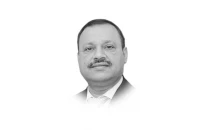


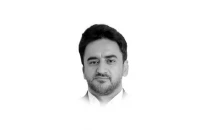

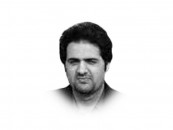

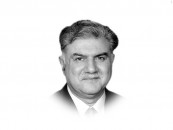
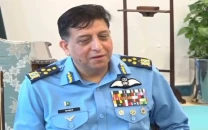

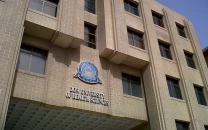
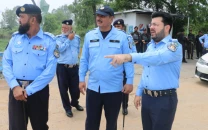
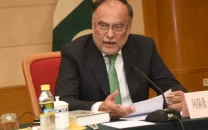
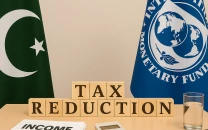
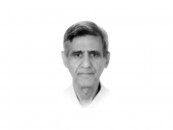
COMMENTS
Comments are moderated and generally will be posted if they are on-topic and not abusive.
For more information, please see our Comments FAQ